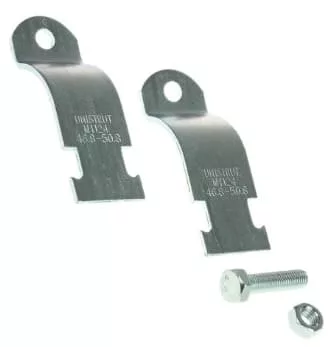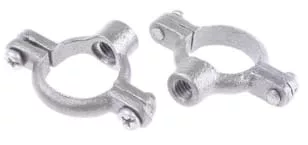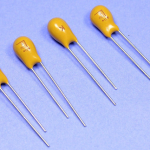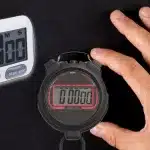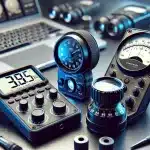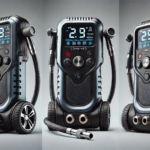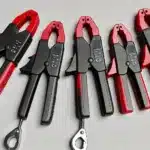Introduction
Pipes are indispensable components in modern infrastructure, channeling everything from water and gas to complex chemicals. But what holds these essential conduits firmly, ensuring their stability, preventing undue stress, and optimising their performance? The unsung hero is often the humble pipe clip. Furthermore, join us to explore the fascinating array of pipe clips available, their indispensable uses across various sectors, and the best practices for their installation to achieve a robust and reliable pipeline.
Defining Pipe Clips: Core Functionality, Sizes, and Compatibility
Pipe clips—also called pipe clamps or pipe brackets—are versatile fastening devices designed to hold and support pipes, tubing, as well as cables. These circular or semicircular brackets are commonly made from plastic, metal, or a combination of both (hybrid or coated models). In addition, they are sized to the pipe’s diameter, typically marked in millimeters or inches. The core functionality of a pipe clip revolves around providing stable support to hold pipes in place against a wall, ceiling, frame, or channel. They ensure that a pipe remains fixed in position, reduce vibration, and prevent potential movement or damage due to pressure or environmental factors.
Available in a wide array of sizes, pipe clamps are manufactured to accommodate various pipe diameters, from small domestic water lines to large industrial conduits. Compatibility is crucial, as their compatibility with diverse pipe types and mounting surfaces makes them a versatile choice for plumbing, HVAC, and electrical conduit installations.
Major Types of Pipe Clips Available in the Market
The world of pipe brackets is diverse, with each type offering unique advantages for specific applications. Here’s a breakdown of the most common types you will find in the market:
Saddle Clips
Also known as saddle clamps, these half-circle clips are perfect for securing pipes flush against walls or ceilings. They typically consist of a single piece of material and are often fastened with screws on both ends. Moreover, saddle clips secure to a surface using screws through pre-drilled holes on either side of the saddle.
Hinged Clips
These snap-on clips feature a hinged mechanism designed to open and close around a pipe. They are suitable for systems requiring frequent access, simplifying maintenance and adjustments.
Adjustable Clips
These clips feature a mechanism (often a screw or a ratchet system) that allows users to modify the grip or the distance from the mounting force. Furthermore, they offer robust flexibility in supporting pipes of varying diameters. Adjustable pipe clamps are highly adaptable for non-standard pipe sizes and for accommodating minor variations in pipe runs.
U-Clips
Shaped like a “U”, these clips are commonly used for quick and secure installation. They secure pipes to beams, channels, or other structural elements, especially with smaller pipes and electrical conduits.
Pipe Rings
Pipe rings encircle the pipe completely and are often suspended from ceilings or beams, allowing vertical and horizontal adjustments.
Two-Piece Clips
As the name suggests, these clips are comprised of two separate components that are assembled around the pipe. However, they feature a base and a locking top, providing extra support for large-diameter or heavy pipes.
Nail-in Clips
These clamps are built for quick and easy installation, featuring an integrated nail or pre-drilled hole for a nail. In addition, they are ideal for securing soft building materials or wood, smaller diameter pipes, cables, or electrical conduits.
Quick-Release Clips
These clips are engineered for pipes or conduits that require frequent opening, closing, or access. They incorporate a mechanism that allows users to detach and reattach pipes without the need for tools quickly.
Specialised Pipe Clips
Specialty pipe brackets are tailored for specific environments or applications that standard clips cannot adequately address. Moreover, this category includes thermal clips for hot water pipes, insulated pipe clamps for noise reduction, and outdoor-grade clips for use in external applications.
Pipe Clamps for Different Environments: Exploring Their Versatility
Pipe clips are crucial in numerous environments for a variety of applications, including:
Residential Plumbing: These pipe fixings are used to fasten hot and cold water lines, waste pipes, and HVAC tubes in bathrooms, kitchens, and basements.
Industrial Piping Systems: Heavy-duty pipe clamps secure large pipes in factories, chemical plants, and energy facilities where mechanical stress is high.
HVAC Systems: They support air ducts and refrigerant lines, ensuring safe and efficient heating/cooling systems.
Electrical Conduits: Clips keep conduit pipes aligned and protected, especially when running cables through walls or ceilings.
Data Centers: Focus on efficient cable and pipe management, often using specialised clamps that offer both support and aesthetic appeal within raised floor or overhead systems.
Food and Beverage Processing: Require sanitary clamps made from polished stainless steel, designed for easy cleaning and preventing contamination.
Water Treatment Facilities: Require clamps resistant to chemicals used in water purification and continuous exposure to water.
How to Install a Pipe Clip? Step-by-Step Guide
Installing a pipe clip is a straightforward process that ensures pipes are securely fastened and remain in place. Follow these steps for effective pipe clip installation:
Step 1: Selecting Appropriate Pipe Clips
Select clips that are suitable for the pipe material, size, and environmental conditions (e.g., temperature, moisture, and corrosion resistance).
Step 2: Marking and Measuring
Determine pipe routes/location and mark precise clip positions along the path. Typically, spacing between clips depends on pipe type and weight (commonly every 1-2 meters).
Step 3: Preparing the Surface
Ensure the mounting surface is properly clean and flat. For masonry or concrete, drill holes at the marked positions.
Step 4: Attaching the Clips
Securely fix clips to the surface using screws and wall plugs if required. For snap-in clips, ensure they click securely into place.
Step 5: Securing Pipes
Place pipes into clips, ensuring they fit snugly without excessive force. For hinged or adjustable clips, close or tighten appropriately.
Step 6: Final Check
Inspect the installation for stability and adjust clips if necessary. Ensure there is no undue stress or tension on pipes.
Final Words
Pipe clips, though seemingly minor, are fundamental to the success and longevity of any piping system. Choosing and installing the right pipe clips is about matching the clip to the pipe, the environment, and the duty. Additionally, prioritise correct sizing, suitable materials, reliable fixings, and a clear plan for thermal movement and noise control. Done well, clipping turns a vulnerable pipeline into a neat, quiet, and durable installation that’s easy to maintain.






